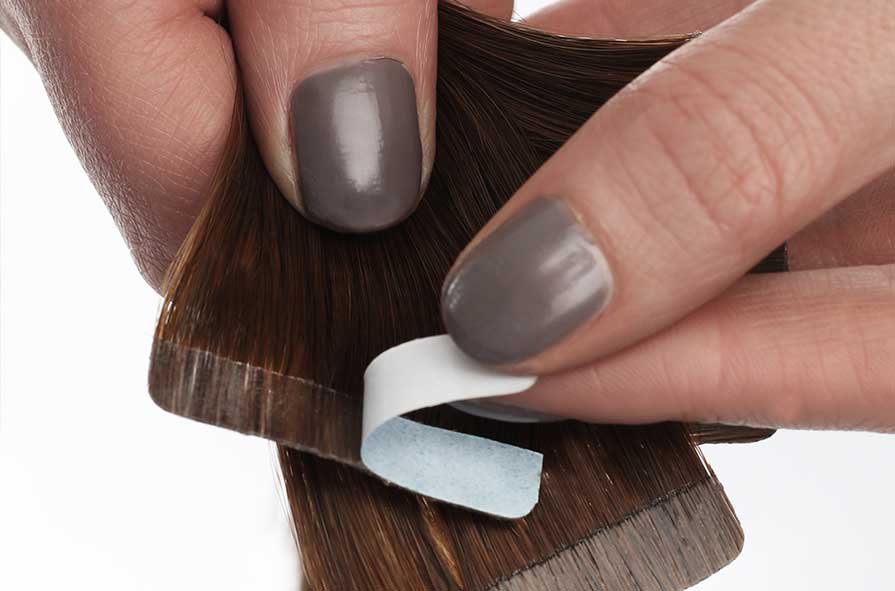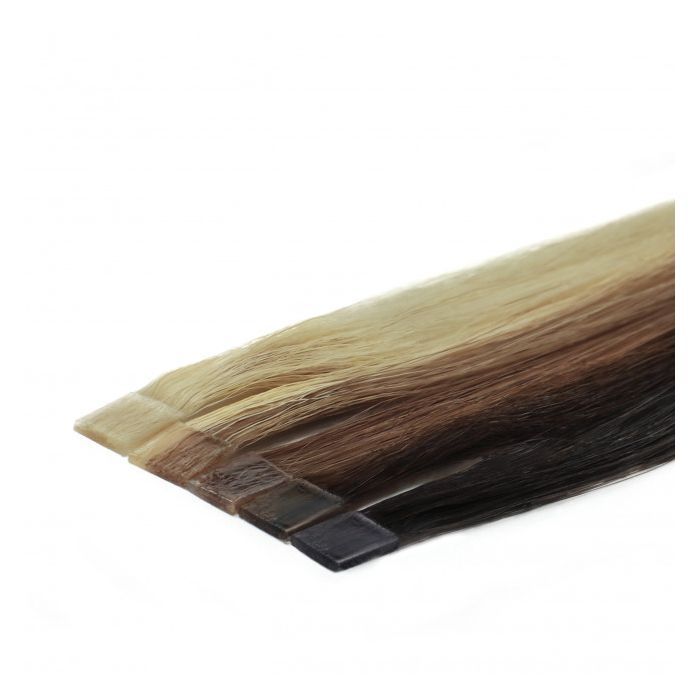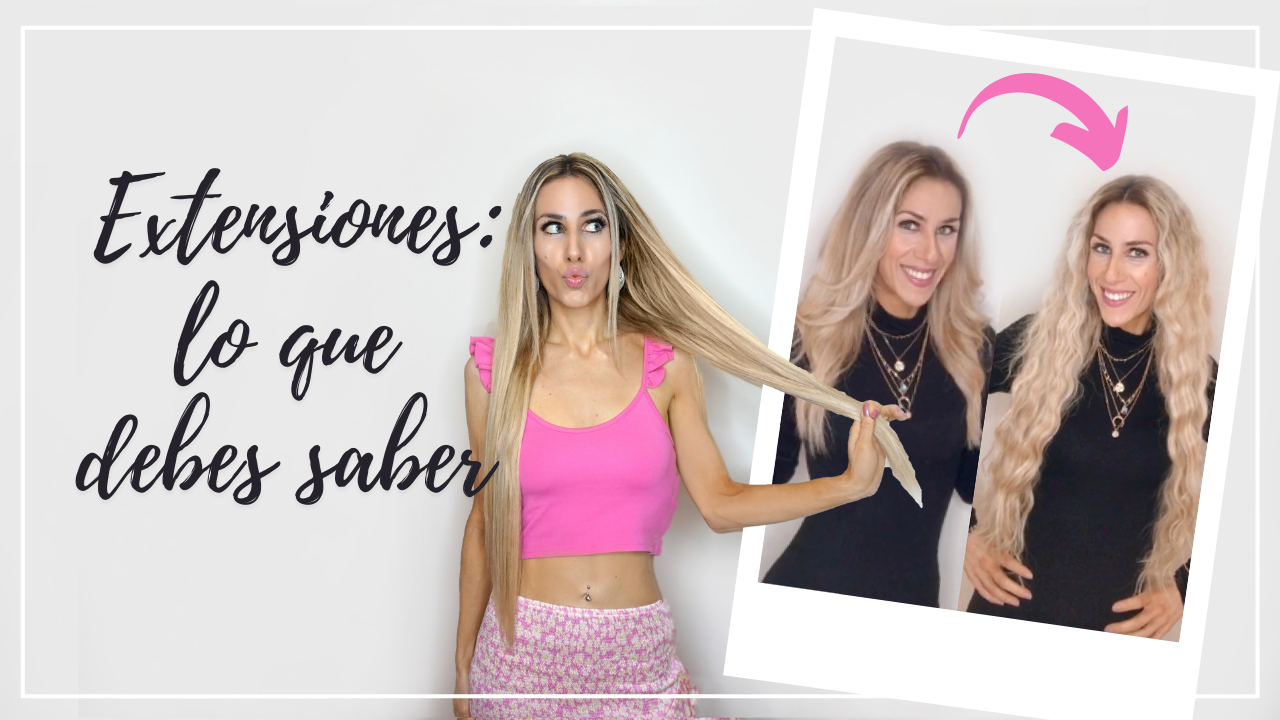Are you considering extensions? In this post I tell you everything you need to know about fixed natural hair extensions. What types there are, which ones can come better for you and of course my personal experience.
At the time, when I wore them, I made a post about natural clip hair extensions. Today I’m going to talk only about the ones I wear right now, which are fixed natural hair extensions.
For those of you who follow me on Instagram, you may know that I was an ambassador for a hair salon brand here in England. Thanks to that collaboration I got the fixed extensions in. The project came up totally unexpectedly. Until that moment I had never considered it. But I decided to wear them and since then I haven’t looked back.
I’m very happy now, but the truth is that when I was going to wear them I had no idea where I was getting into. I didn’t have time to research. There are a lot of things you don’t know at first. And I think that taking into account that it is such an expensive hairdressing service, and so permanent, it is important to be well informed first.
In this article I am going to focus mainly on the types of fixed natural hair extensions that exist and which ones may be better for you in each case. Depending on your hair type, your budget and your lifestyle. I’m also going to talk about pros and cons and of course the price.
Differences between fixed and clip natural hair extensions
This is pretty obvious, but it doesn’t hurt to remember. Clip hair extensions are those that come in hair curtains joined by a clip. You put them on and take them off yourself. If you want to wear them all day, you just have to take them off to sleep. They do not require maintenance in hairdressing. You wash them separately and that’s it.
Fixed or permanent natural hair extensions are those that put you in a hairdressing salon and are permanently attached to your hair. They require visits to the salon to keep them in place and also to remove them. You wash them along with your natural hair in the shower.
What does remy hair mean?
When we inform ourselves about hair extensions it is inevitable to come across the term “remy hair”. Well, remy hair is of higher quality human hair. It is characterized because the cuticles remain intact and always in the same direction.
Nowadays almost all well-known brands use remy hair, but it does not hurt to make sure when you buy them or they are going to install them in the hairdresser.
I have always thought that it would be very rare to find hairs on your extensions that are placed upside down. So yes, better make sure it’s remy hair.
Types of fixed natural hair extensions:
There are basically three types of fixed natural hair extensions. These types of extensions may have some subtypes, but in essence they are as follows:
1. Stitched or invisible thread extensions

Stitched extensions can be presented in curtain or in individual strands.
Stitched hair extensions are the most recommended hair extensions to give volume. The reason is that they are not “crushed” against your natural hair, unlike other methods that we will see later. In these there is volume at the root of the extension, which gives volume to the hair.
1.1. Curtain sewn extensions
This is the fastest method to apply. These are hair curtains that are sewn over your natural hair through an invisible thread. They do not damage the hair excessively since they do not use chemicals.
The difficulty of washing curtain extensions (whatever type they are) is medium, since you can not put your fingers between the hair easily.
1.2. Individual sewn extensions.
The individual extensions that are sewn are simply a strand of hair just a few millimeters wide that is sewn to your hair. The strand itself is already tied, and what they actually do is tie it, not stitch it, to your natural lock. I have used this type of extension in combination with other staples.
The difficulty of washing the individual extensions (both staple and those that are glued or sewn) is easy. The reason is that they are the ones that most resemble natural hair and are the easiest to handle.
Price of sewn extensions of natural hair: 300 € + 75 € application. This is an average indicative price calculated based on an average weight (100gr) and average length (22 inches). The installation price of the individual ones can be more than the curtain, since it takes longer.
2. Staple hair extensions

Staple extensions are individual strands of hair that are stapled to a strand of your natural hair.
These are the extensions that I personally carry. In my opinion they are the hair extensions that have a more natural finish within the permanent extensions, and of all hair extensions in general. I am very happy with them.
In this case the strands are thinner than the individual sewn, so they take longer to put on. They can take as long as 7 hours in some cases. However, they are the ones that have a more natural effect.
Staple extensions are ideal if you wear your hair up or in a high ponytail often. These are the most recommended hair extensions for braids. I do different hairstyles and they don’t see me.
One of the drawbacks of this type of extensions, apart from the time it takes to apply, is that they are the most expensive type of extension.
Like the individual sewn ones, staple extensions are the easiest when washing hair.
Price of natural hair extensions in staples: 400 € + 75 € application. This is an average indicative price calculated based on an average weight (100gr) and average length (22 inches).
3. Keratin hair extensions or adhesives
Keratin hair extensions can also be found under the name of adhesive extensions, and are those that are attached to your hair.
3.1. Keratin extensions in curtain

They are two strands of hair that stick on and under a lock of natural hair. Like in a sandwich. They damage their hair a little because they carry glue. Also to keep in mind: they are not the best if you wear a high ponytail often. Because the strip is a few centimeters wide.
On the positive side, adhesive extensions, both in the curtain and individual versions, are the fastest to apply. And also the cheapest.
Adhesive curtain extensions are difficult to wash, because in the end, it is a piece of glued hair.
3.4. Individual keratin extensions

The method of application is the same, they stick to your hair through a special glue, but this time in finer clumps of hair. In English they call them “flat tips”.
Maintenance of adhesive extensions is every 8 weeks.
As drawbacks, adhesive or keratin extensions are the ones that can damage your hair the most, since it is still a chemical.
However, these types of extensions are the most recommended if you have a low budget.
Price of natural hair adhesive extensions: 250 € + 75€ application. This is an average indicative price calculated based on an average weight (100gr) and average length (22 inches). The installation price of the individual ones can be more than the curtain, since it takes longer.
What kind of fixed natural hair extensions do not damage the hair?
Among the three general types of extensions that exist and that we have seen, invisible thread extensions are the ones that least damage the hair. Secondly, they would be the staples, which exert a little more pressure against natural hair.
I hope this article has solved some doubts if you are considering wearing fixed natural hair extensions. I love them, and I don’t regret them at all. But I would have liked to have had more information at first.
To finish, I leave you this video of my channel where I talk to you and I teach you more in detail about my extensions and the process of how they put them on me and how I take care of them.
Lots of love,
Deliria Rose



2 thoughts on “Fixed natural hair extensions: what you need to know”
Comments are closed.